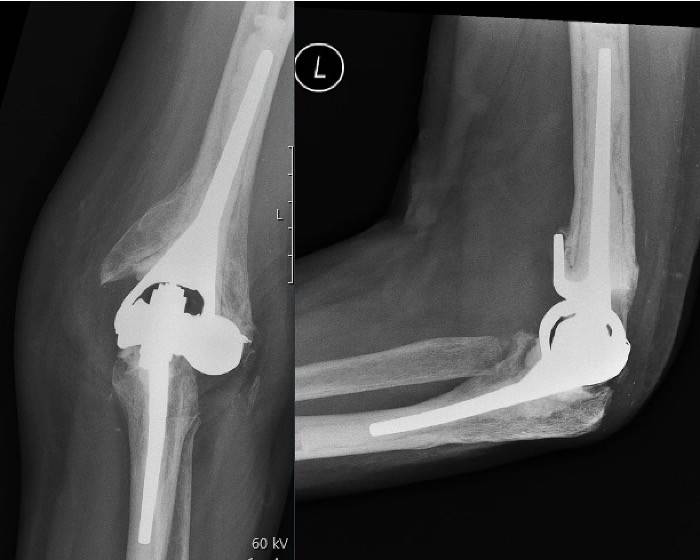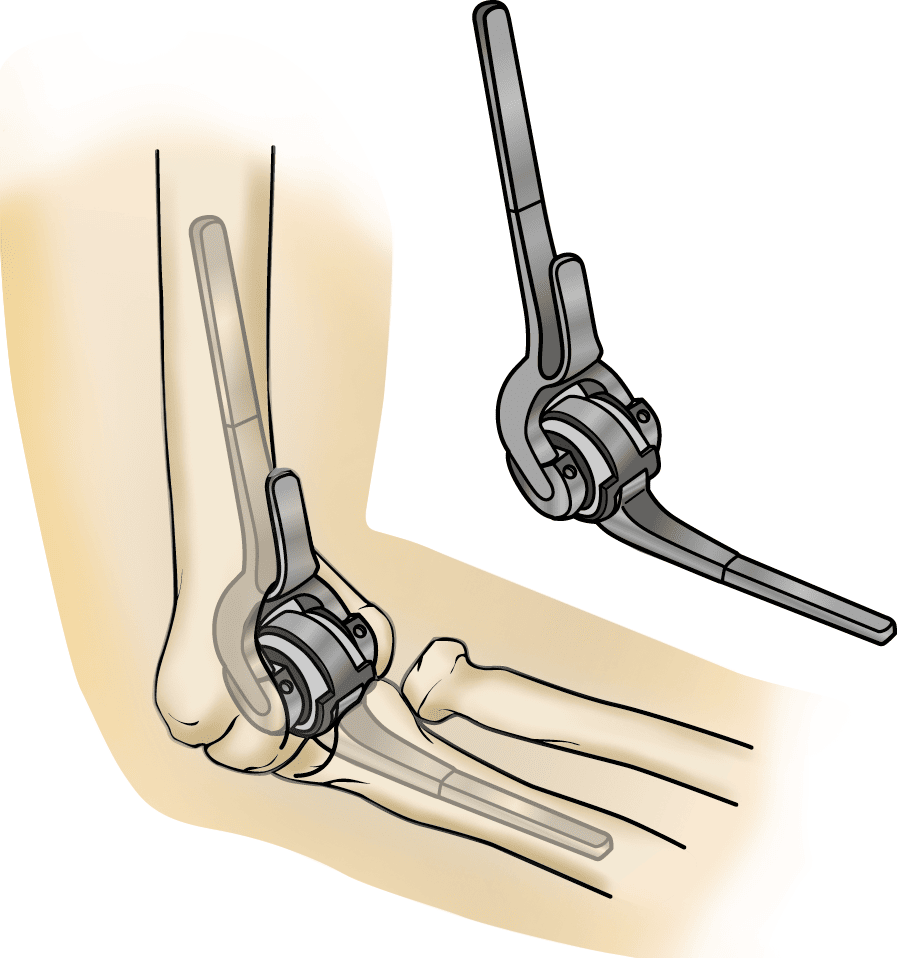Elbow Replacement
Elbow replacement surgery, also known as total elbow arthroplasty (TEA), is a procedure in which the damaged parts of the elbow joint are replaced with artificial components (prosthesis). Though less common than hip or knee replacements, it can significantly reduce pain and improve function in patients with severe elbow joint damage.
Anatomy of the Elbow Joint
The elbow is a hinge joint formed where three bones meet:
- Humerus (upper arm bone)
- Ulna (larger forearm bone)
- Radius (smaller forearm bone)
These bones are connected by cartilage, ligaments, and tendons that allow the elbow to bend, extend, and rotate the forearm. The main hinge movement occurs between the humerus and ulna.

Indications for Elbow Replacement
- Severe rheumatoid arthritis causing joint destruction
- Post-traumatic arthritis from old fractures or dislocations
- Osteoarthritis, especially in elderly or low-demand patients
- Complex fractures of the distal humerus (especially in older adults)
- Failed previous elbow surgeries
- Tumors affecting the bone or joint
Types of Elbow Replacements
It is usually considered when:
- Pain is severe and disabling
- Joint is unstable or deformed
- Other treatments (medications, therapy, injections) have failed
- Total Elbow Arthroplasty (Linked Prosthesis)
- The humeral and ulnar components are connected (hinged) with a metal axle
- Provides stability
- Most common type, especially in cases with weak ligaments or bone
- Unlinked Prosthesis
- Components are not physically connected
- Relies on surrounding ligaments and muscles for stability
- Requires good bone and soft tissue condition
- Partial Elbow Replacement
- Only part of the joint (usually the humerus) is replaced
- Used in isolated fractures or localized arthritis

Clinical Pathway
- You will be seen by the specialist in outpatient department for clinical evaluation.
- You will be asked certain questions related to your symptoms and examined thoroughly.
- Your investigations such as X-ray, MRI will be reviewed, following which a surgical plan of surgery will be made.
- A detailed explanation will be given to you with regards to surgery along with its pros and cons.
- You will be seen by the anesthetic team
- Your fitness for surgery will be evaluated.
- Investigations including blood tests will be carried out.
- A physical therapist will explain you with regarding to the post op precautions, exercises and immobilization.
- You will be admitted on the day of surgery in the morning. The surgery will be performed under general and regional anesthesia.
- After surgery, you will be under certain medication to control your post operative pain to make you comfortable.
- You will be discharged in next two to three days with post operative instructions.
- Your physical therapy will be started on the next day after surgery and will continue for around three months.
- You will be required to see the specialist in outpatient clinic on couple of occasions to assess the recovery. You were expected to recover completely in approximately three to six months.
Elbow replacement is a highly effective procedure for pain relief and improved function in patients with severe joint damage, particularly from rheumatoid arthritis, trauma, or failed prior surgeries. While recovery is generally smooth, the lifelong lifting restrictions and implant longevity must be considered carefully, especially for younger or more active individuals.






